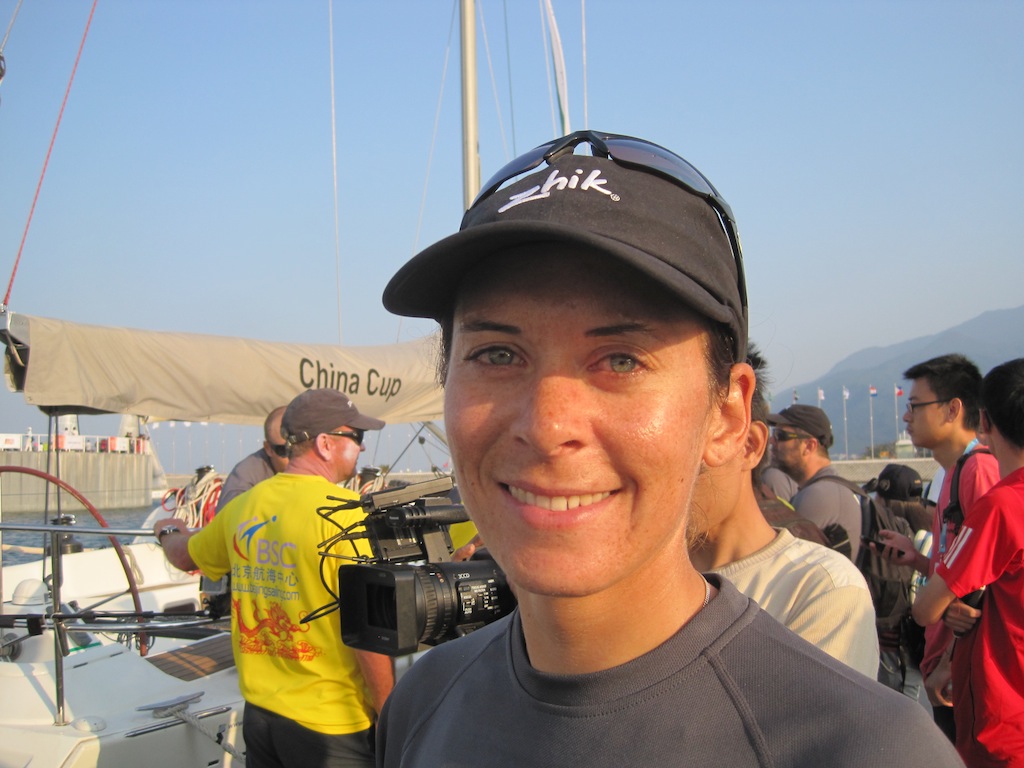Spring PHRF racing tune up. North Sails experts Tom Castiglione and Jack Orr from North Sails discuss a variety of go fast topics to get you up to speed from the day you splash your boat. These tips could apply to any form of handicap yacht racing...
How To Achieve Optimum Rig Tune
You should try to have the same process each time when getting your rig set up for given conditions. Here’s how you can make sure you do it right, every time.
Record all of your settings: Your base, light air, medium air, heavy air settings
Be familiar with your tuning guide, and be comfortable adding turns/ taking turns off at the dock and on the water as conditions change
While at the dock, make the mast straight by adjusting the diagonals, cap shrouds. Keep in mind you are simply trying to get your baseline.
Using a Loos gauge will help you stay on track with incremental adjustments. Attach your Loos Gauge about 2 meters from the deck. Eye-level is always a good place to start
Duplicate your settings as you go, and always measure from the same place every time
If you have a great day on the water, make a note of it. It’s good to go back to base at the end of each day, but make sure you know where you were in those conditions you did well in so you can replicate settings again the next day.
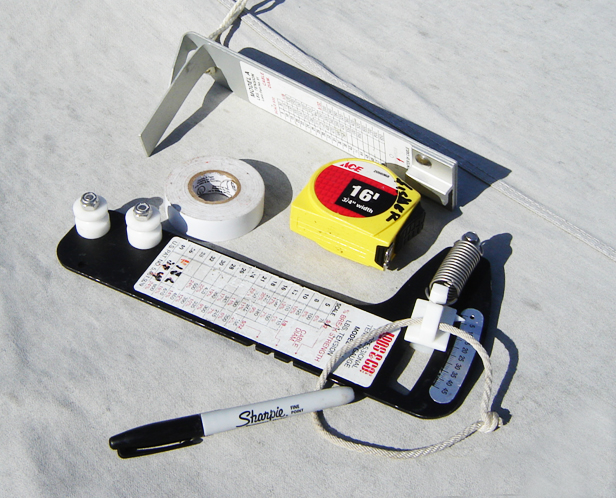
How does rig set up affect sail shape?
Softer rig- fuller sail
Tighter rig- flatter sail
Try to balance both sails
Adding an adjustable backstay to make your sails pull tighter will help you fine-tune on the water.
Changing gears
There are Four modes of sailing. Modes are important to understand so you can power up when you have the opportunity, or maintain your lane when you absolutely have to.
Foot mode: designed to generate speed. 4-5” off. Halyard is soft, backstay is soft, trailer and sheet is CL or slightly below CL
Normal mode: not fighting for a lane, sailing your best VMG, sailing on target. 1-2” off
Point mode: you need height, shy of layline, boat to leeward you are trying to avoid. 0” off the spreaders= tight. Halyard is hard, backstay (keep pumping hydraulic backstay), the traveler is CL or slightly above, sheet top batten on CL or slightly below the boom.
De-power mode: backstay on, halyard on, vang on hard to keep boom level. If you see wrinkles coming from the mast going to the clew, you’ve inverted your mast, and you have too much backstay.
Quick Tip: Use your spreaders as a reference point. Marking your spreaders before you leave the dock helps you achieve each mode, quick.
Quick Tip: Use your spreaders as a reference point. Marking your spreaders before you leave the dock helps you achieve each mode, quick.
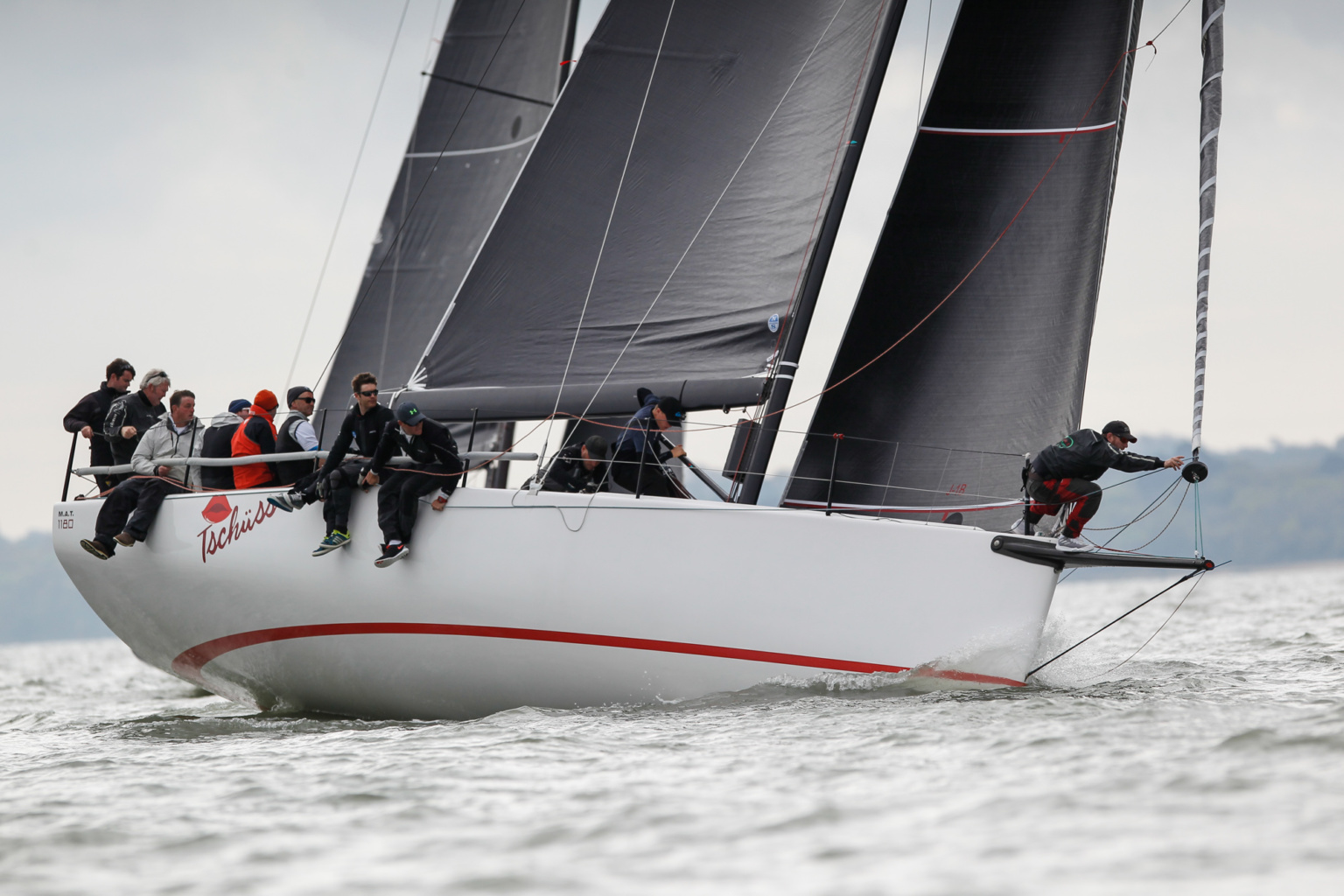
Weight placement
Assign a crew member to help manage this for each maneuver
Keep your crew close together on the rail
In light air, send your crew down below and forward. If you remain on deck, get low!
Make sure your crew is on the rail during mark roundings. It’s essential to keep your rudder in the water! Too much heel reduces your keel depth, which causes you to go sideways. It can also force you to round up in a puff.
Ease the sails at the mark, to help you steer the boat down. If you use weight and your sails, you shouldn’t require much helm to steer the boat.
Wait until the boat is settled before you begin to clean up unless you are preparing for a quick maneuver.
The crew needs to move forward in lighter air and on the downwind. If breezy, you run the crew back downwind, but make sure you are not too bow or stern heavy. Equal body weight placement on-deck can help your boat get through the wave state better, and help you keep the boat flat and not over flatten when you are coming down a wave, or when a puff hits.
If you are comfortable, you are doing it wrong!
Communication
There should be a constant flow of communication happening between the trimmers and the helm. Constant dialogue keeps the sails trimmed together, and at the same time. If you are looking for more power, the main and jib trimmer needs to know so they can ease/ trim on accordingly. If one is eased and the other is fully trimmed, that is not fast.
What to do at the dock:
1. Clean out your boat. If you don’t need it to race, you don’t need it on the boat!
2. Check your hull. Any knicks, growth, wear and tear on the hull is speed lost. Even a little makes a difference!
3. Make sure your instruments are running properly. Check your instruments to make sure they are correctly calibrated and make sure everyone on board knows how to use them. The last thing you want is for someone to hit the ‘off’ button when you are trying to mark 5:00 minutes or ping the wrong end of the line.
4. Tune your rig. Without a properly tuned rig, you won’t be able to control your mast’s behavior over the full range of conditions. Fortunately, rig tuning is a straightforward step by step process for both masthead and fractional rigs.
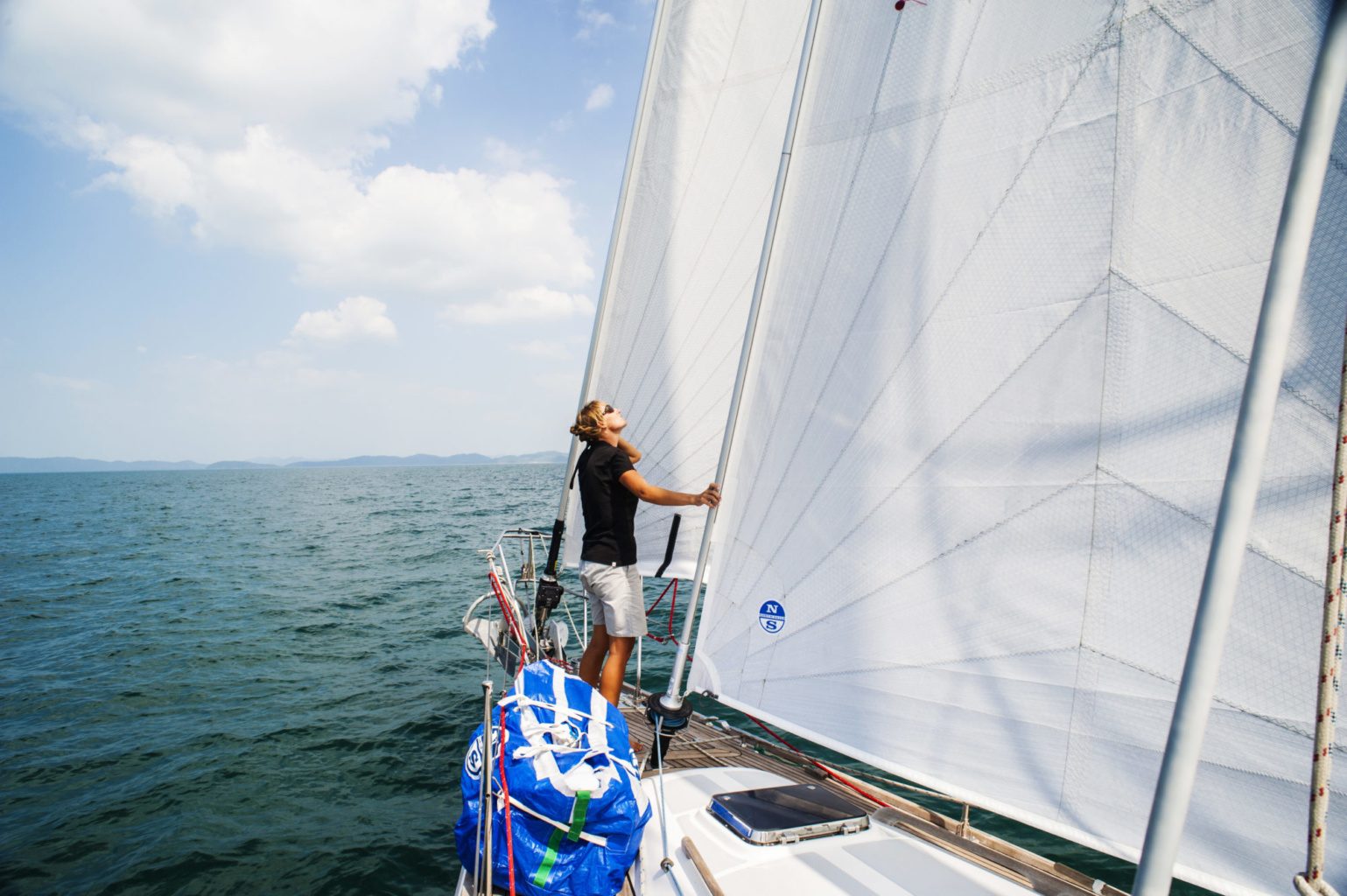
Jib Top & Genoa Staysails
A Genoa Staysail can be set inside a Jib
A Jib Top can also be designed to set on the bowsprit which adds performance
Bowsprit modifications to simplify your sailing (for inshore and offshore)
Great for angles when you are not DDW often.
If you are sailing a W/L in 15 knots, you may like the symmetric option better.
In general, shifting to asym can increase the performance of the boat, adding speed, but it all depends on what type of courses you are sailing that will dictate which choice is best for you.
It’s essential to practice before it’s time to race. When you get to your racing area, what can you add to your pre-race checklist?
Spend a day getting the bugs out
Time the starting line
Spinnaker sets and douses
Tacking and jibing
Using your crew weight to go fast
Boats that practice win the races!

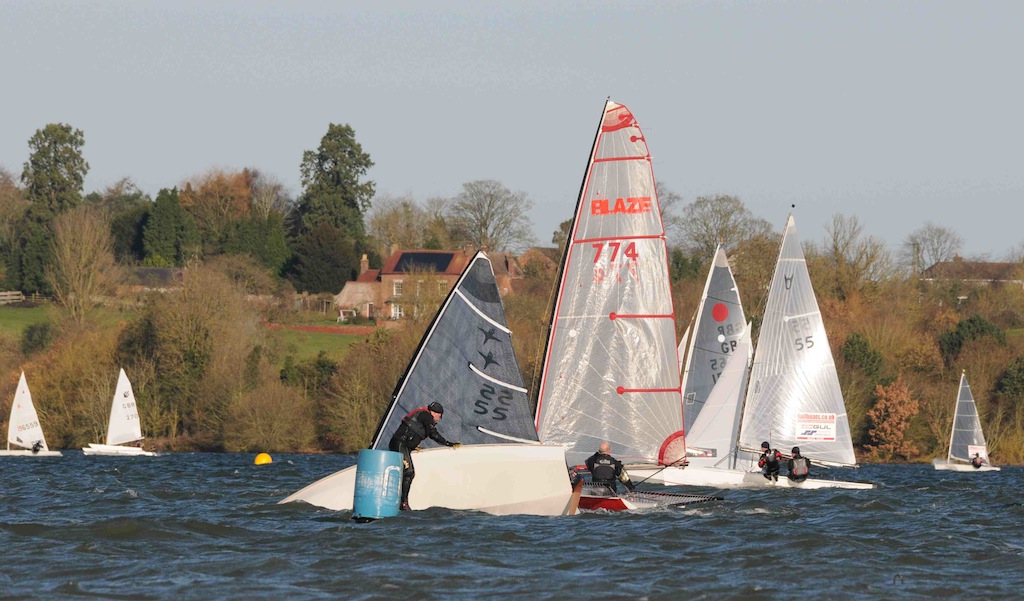
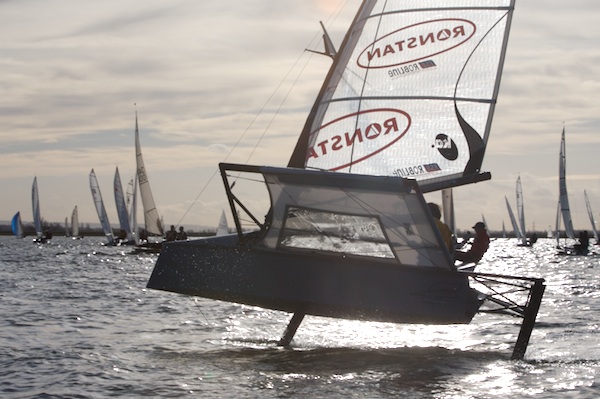 The third edition of the SailJuice Global Warm-up brings together five of the biggest winter handicap racing events into a unified series, to find out just who is tough enough to race their way through the brutal cold of a British winter. It kicks off with the Grafham Grand Prix on 2 January 2012.
The third edition of the SailJuice Global Warm-up brings together five of the biggest winter handicap racing events into a unified series, to find out just who is tough enough to race their way through the brutal cold of a British winter. It kicks off with the Grafham Grand Prix on 2 January 2012.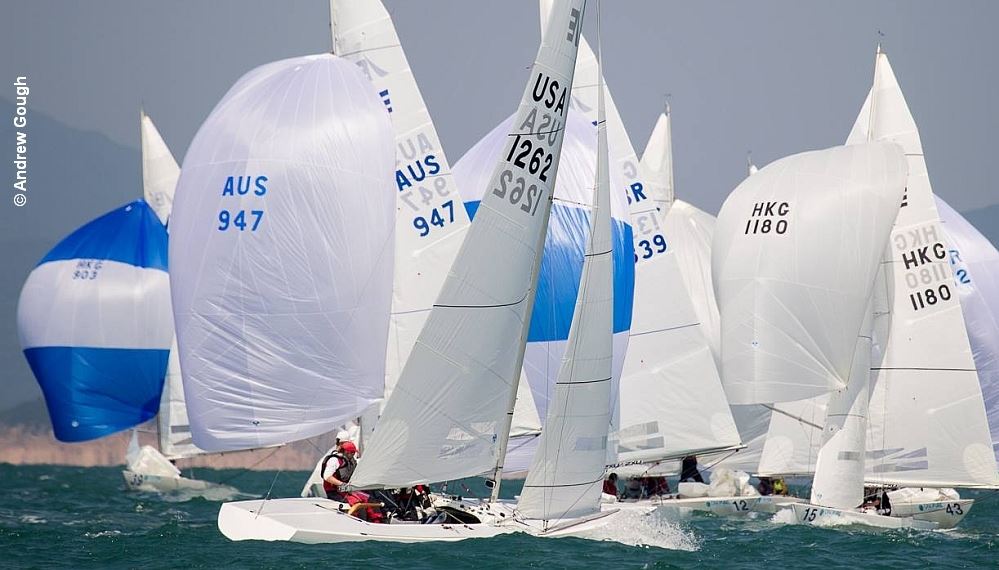 Skip Dieball narrowly won the Etchells World Championships in Hong Kong last November in a close battle with fellow American Steve Benjamin, the 470 Olympic silver medallist. Here, Skip looks back at that victory and talks about his plans for defending his world title in Cowes in 2016...
Skip Dieball narrowly won the Etchells World Championships in Hong Kong last November in a close battle with fellow American Steve Benjamin, the 470 Olympic silver medallist. Here, Skip looks back at that victory and talks about his plans for defending his world title in Cowes in 2016...